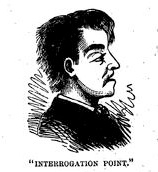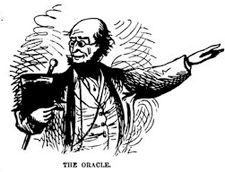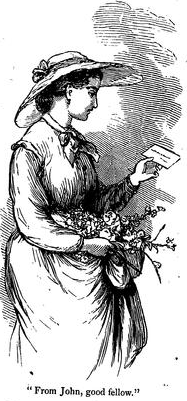 |
T A B L E O F C O N T E N T S
M A R C H / A P R I L 2 0 1 5
Volume 21, Number 3/4
DOI: 10.1045/march2015-contents
ISSN: 1082-9873
E D I T O R I A L
The Practice of Digital Libraries
Editorial by Laurence Lannom, Corporation for National Research Initiatives
A R T I C L E S
Storage is a Strategic Issue: Digital Preservation in the Cloud
Article by Gillian Oliver, Victoria University of Wellington, New Zealand; Steve Knight, National Library of New Zealand
Abstract: Worldwide, many governments are mandating a 'cloud first' policy for information technology infrastructures. In 2013, the National Library of New Zealand's National Digital Heritage Archive (NDHA) outsourced storage of its digital collections. A case study of the decision to outsource and its consequences was conducted, involving interviews of the representatives of three key stakeholders: IT, the NDHA, and the vendor. Clear benefits were identified by interviewees, together with two main challenges. The challenges related to occupational culture tensions, and a shift in funding models. Interviewees also considered whether the cultural heritage sector had any unique requirements. A key learning was that information managers were at risk of being excluded from the detail of outsourcing, and so needed to be prepared to assert their need to know based on their stewardship mandate.
Managing Digital Collections Survey Results
Article by Liz Bishoff, The Bishoff Group, and Carissa Smith, DuraSpace
Abstract: In spring 2014, DuraSpace commissioned The Bishoff Group to conduct a survey of the digital collection management practices performed by academic libraries that are not members of the Association of Research Libraries (ARL) in order to gain a better understanding of the status of their current digital content creation, management, and preservation activities. Respondents included 145 institutions across all types of academic libraries comprising two- and four-year colleges, masters, and doctorate granting universities. The survey addressed institutional content, repositories, services, future needs and plans, staff support, and the libraries' overall commitment to digital preservation. This article reports on the results of the survey.
OpenDOAR Repositories and Metadata Practice
Article by Heather Lea Moulaison, Felicity Dykas and Kristen Gallant, University of Missouri
Abstract: In spring 2014, authors from the University of Missouri conducted a nation-wide survey on metadata practices among United-States-based OpenDOAR repositories. Examining the repository systems and current practices of metadata in these repositories, researchers collected and analyzed the responses of 23 repositories. Results from this survey include information about the creators of metadata, best practices and resources, and controlled vocabularies. Findings will inform libraries about the current state of repository and metadata choices in open repositories in the United States, especially as they pertain to overarching questions of interoperability.
A French-German Survey of Electronic Theses and Dissertations: Access and Restrictions
Article by Joachim Schöpfel, GERiiCO Laboratory, University of Lille 3, France; Hélène Prost, National Center for Scientific Research, France; Marjorie Piotrowski, University of Lille 3, France; Eberhard R. Hilf, Institute for Scientific Networking, Germany; Thomas Severiens, Institute for Scientific Networking, Germany; Paul Grabbe, Institute for Scientific Networking, Germany
Abstract: As a French-German research team we conducted a survey with a sample of academic libraries and graduate schools in France and Germany to determine the current situation and trends in the publishing of electronic PhD theses and dissertations (ETDs) under Open Access (OA). The percentage of OA theses varies depending on the country, the research field, and the institution. Not all ETDs are available in OA for a variety of reasons, including confidentiality, embargoes, author-imposed restrictions, and a lack of encouragement and/or requirement by libraries and graduate schools. The survey reveals qualitative and structural differences between France and Germany in this area. Here we discuss the survey findings, the methodologies used in the survey, and the various policies (or lack thereof) and their impact on ETDs and OA. A strategy is outlined for moving towards ensuring that publishing ETDs under OA becomes routine, and an electronic version becomes the only manifestation of a thesis.
Trustworthiness: Self-assessment of an Institutional Repository against ISO 16363-2012
Article by Bernadette Houghton, Deakin University, Geelong, Australia
Abstract: Today, almost every document we create and the output from almost every research-related project, is a digital object. Not everything has to be kept forever, but materials with scholarly or historical value should be retained for future generations. Preserving digital objects is more challenging than preserving items on paper. Hardware becomes obsolete, new software replaces old, storage media degrades. In recent years, there has been significant progress made to develop tools and standards to preserve digital media, particularly in the context of institutional repositories. The most widely accepted standard thus far is the Trustworthy Repositories Audit and Certification: Criteria and Checklist (TRAC), which evolved into ISO 16363-2012. Deakin University Library undertook a self-assessment against the ISO 16363 criteria. This experience culminated in the current report, which provides an appraisal of ISO 16363, the assessment process, and advice for others considering embarking on a similar venture.
Development of Linked Data for Archives in Korea
Article by Ok Nam Park, Sangmyung University, Republic of Korea
Abstract: The study reported on here converts records of National Archives of Korea to linked data, and connects archives data to library and museum data in order to show how linked data are actually used in MLA (Museum-Library-Archives). This research analyzed the data structure of the National Archives of Korea and ontologized data into linked data. To produce RDF/OWL data from the data sources, this research used Dublin Core and SKOS (Simple Knowledge Organization System). TopBraid Composer™ was utilized as the ontology design tool. The linked data for the National Library of Archives enabled search by collocation, and free search between archival records through visualization and SPARQL. A flexible linking from archival data to authority data was shown. The interlinking with library and museum data enabled users to find information from various datasets. Limitations in the existing records search system were addressed and improved through linking. Linked data established in this way actualized empirical studies that prove the benefit of libraries, museums and archives data integration. It will contribute to increasing the possibility of reusing data in the National Archives of Korea. In addition, the modeling provided by this research can be used for modeling linked data.
Tools for Discovering and Archiving the Mobile Web
Article by Frank McCown, Monica Yarbrough and Keith Enlow, Harding University
Abstract: Many websites are adapting their content for users who are accessing the Web using smartphones and tablets. The growth of this Mobile Web has required web archivists to change their practices in order to collect this ephemeral web content. We have created a tool called MobileFinder which can be used to automatically detect mobile pages when given the URL of a desktop web page. We used this tool in an experiment to gauge what techniques popular websites are currently using to expose mobile content, and we incorporated the tool into Heritrix to demonstrate its usefulness to the web archiving community.
Digital Library Research in Action: Supporting Information Retrieval in Sowiport
Article by Daniel Hienert, Frank Sawitzki and Philipp Mayr, GESIS, Leibniz Institute for the Social Sciences, Germany
Abstract: Sowiport is the information portal for the social sciences that contains over 8 million literature references, research projects and full texts from 18 databases, including six English-language databases from ProQuest/CSA. Since its foundation seven years ago, Sowiport has been re-launched on the basis of the popular discovery framework VuFind. In this article we present how heterogeneous databases from different data providers can be integrated to provide the user one point of access to social science information. Further we describe several value-added services that assist the user at different stages of the information seeking process.
Reconstructing the Past Through Utah Sanborn Fire Insurance Maps: A Geospatial Approach to Library Resources
Article by Justin B. Sorensen, J. Willard Marriott Library, University of Utah
Abstract: Cartographic maps have the ability to convey information and ideas in ways text cannot. The Utah Sanborn Fire Insurance Maps are one such resource, depicting detailed information on buildings, layouts, compositions and boundaries of cities and towns. As time has progressed, the interest in these resources has continued to grow, opening the door for the creation of an updated method for viewing and examining this valuable collection. Through the incorporation of GIS and geospatial technology, the printed and scanned materials have been converted into georeferenced raster datasets, allowing viewers the ability to geospatially interact with the information and apply the information to their research in new and exciting ways. This article describes the Digital Scholarship Lab's endeavor to convert these valuable resources into research driven geospatial datasets, providing a new format for how the library information is presented as well as a new method for interacting and examining the information in detail.
N E W S & E V E N T S
In Brief: Short Items of Current Awareness
In the News: Recent Press Releases and Announcements
Clips & Pointers: Documents, Deadlines, Calls for Participation
Meetings, Conferences, Workshops: Calendar of Activities Associated with Digital Libraries Research and Technologies
|
 |
F E A T U R E D D I G I T A L
C O L L E C T I O N



Images from The innocents abroad, or, The new Pilgrim's progress. Twain, Mark, (1835-1910).
[Courtesy of Wright American Fiction Collection, Indiana University. Used with permission.]

Image from Pink and white tyranny. Stowe, Harriet Beecher, (1811-1896).
[Courtesy of Wright American Fiction Collection, Indiana University. Used with permission.]
The Wright American Fiction project was conceived in 2000 under the leadership and editorship of Perry Willett, then affiliated with the Indiana University Libraries. The online collection consists of nearly 3,000 titles, which were digitized and encoded with the help of several Committee on Institutional Cooperation (CIC) Libraries. The project is a digital extension of the comprehensive bibliography compiled by Lyle H. Wright, a librarian at the Huntington Library in San Marino, California, which listed 2,923 titles from diverse genres. Wright's bibliography was part of a larger three-volume set, listing American fiction from 1774 through 1900, and is widely considered to be the most comprehensive bibliography of American fiction of the 18th and 19th centuries.
Like the bibliography at its foundation, the Wright American Fiction project spans 1851-1875, a period when American fiction was still in its infancy. This was a time when many well-known American authors, such as Harriet Beecher Stowe, Mark Twain, Bret Harte, and William Dean Howells, were beginning their writing careers and would later go on to publish their best known works. Most of the authors contained in the bibliography, however, are less known, making this digital collection an unparalleled source for knowledge that allows insight into American literature, culture, and history otherwise unattainable.
The Wright American Fiction project is heavily referenced and often sought by scholars for data mining, textual analysis, network analysis and visualizations. In continuing support of readers and researchers, the project was recently migrated to ensure ongoing, optimal access to the digital content. In 2012, the Indiana University Libraries began the migration of the Wright American Fiction project to an updated version of the Guidelines for Electronic Text Encoding and Interchange (TEI P5) and to a new delivery platform, California Digital Library's eXtensible Text Framework (XTF).
Part of this work entailed the full-text generation using Optical Character Recognition software against the original facsimile page images for several hundred texts that were originally missing text. As a result, the Wright corpus is now full-text searchable in its entirety, comprised of edited, mid-level encoded texts and unedited, minimally encoded texts following the Best Practices for Text Encoding in Libraries.
Bibliographic searching is also possible as is browsing by author, title and publication year indexes. Readers and researchers can explore the Wright collection in text mode or image mode and they can also download PDFs and TEI/XML files. Access to the TEI and plain text files the entire corpus is available on GitHub.
To learn more about the project — history, project partners, and encoding or technical details surrounding the new web site, please visit the project information page.
Contributed by:
Michelle Dalmau, Indiana University Libraries
mdalmau@indiana.edu
Wright American Fiction Project Team, Indiana University Libraries:
Kara Alexander, Digital Media Specialist
Michelle Dalmau, Head of Digital Collections Services
Randall Floyd, Lead Programmer/Analyst
Julie Hardesty, Metadata Analyst
Nicholas Homenda, Digital Projects Librarian
D - L I B E D I T O R I A L S T A F F
Laurence Lannom, Editor-in-Chief
Allison Powell, Associate Editor
Catherine Rey, Managing Editor
Bonita Wilson, Contributing Editor
|